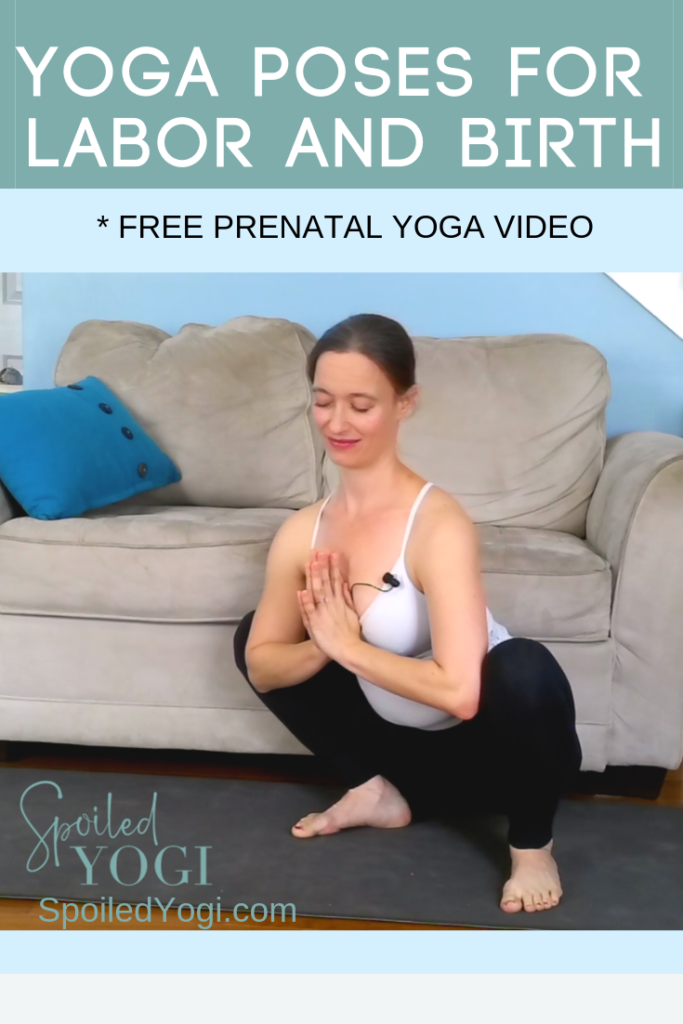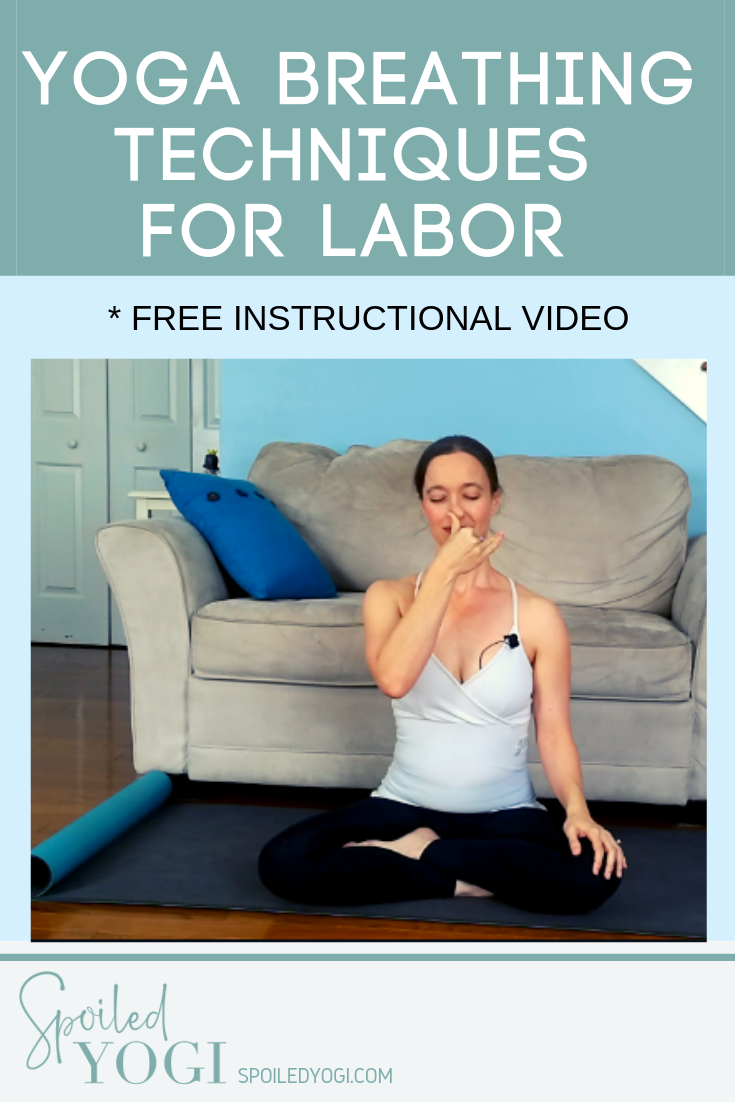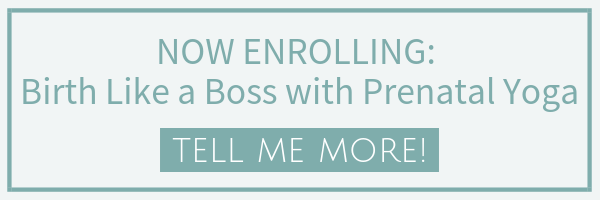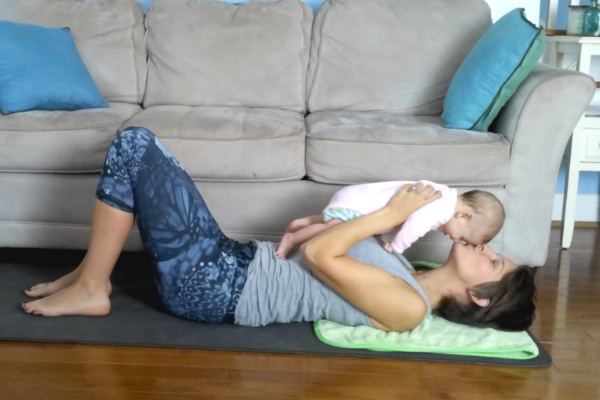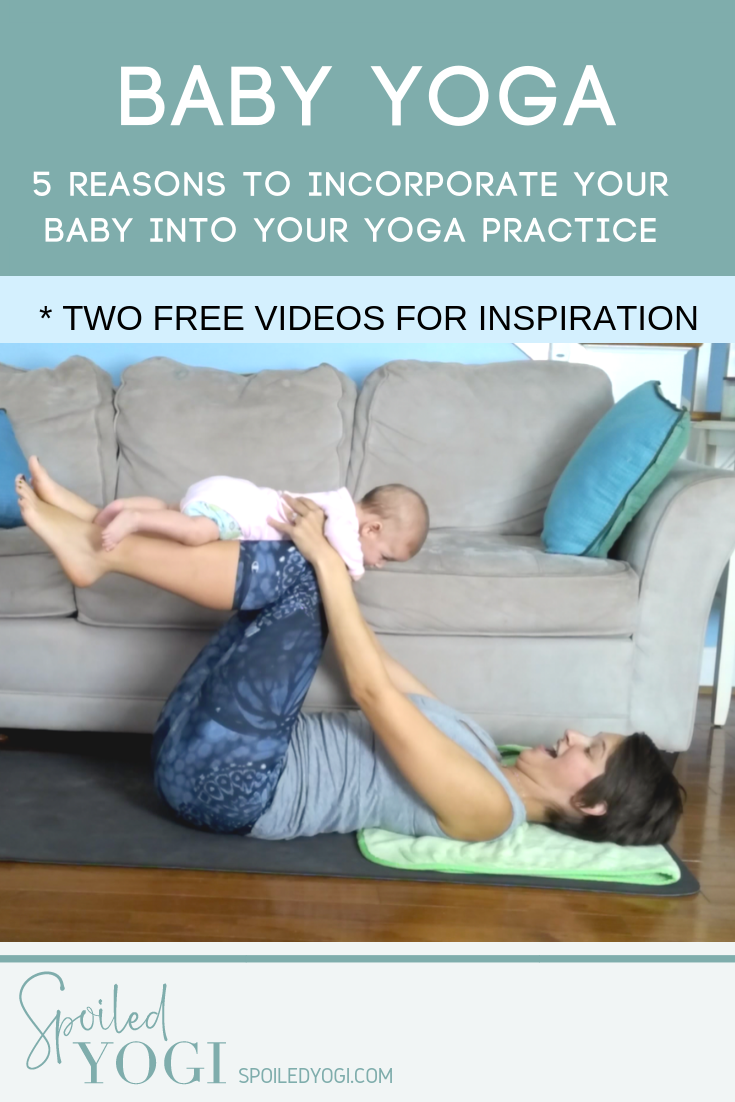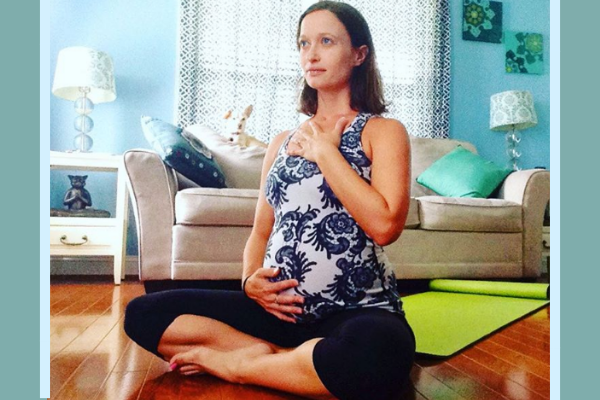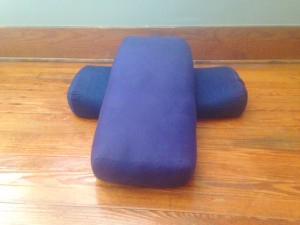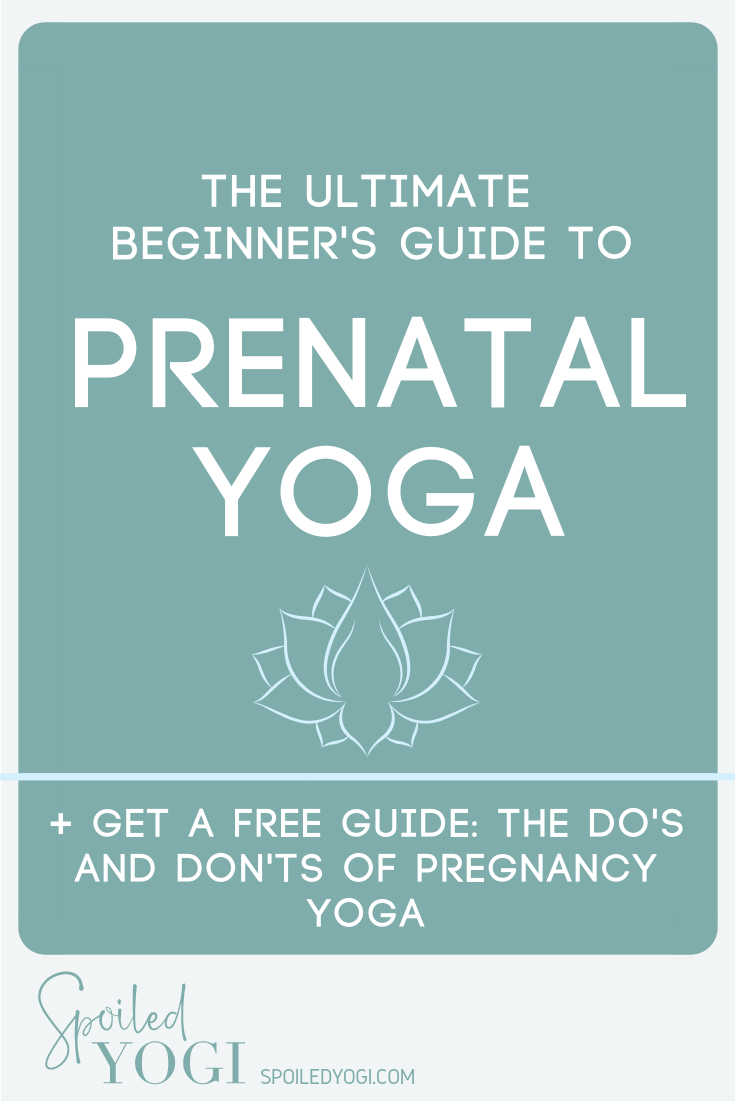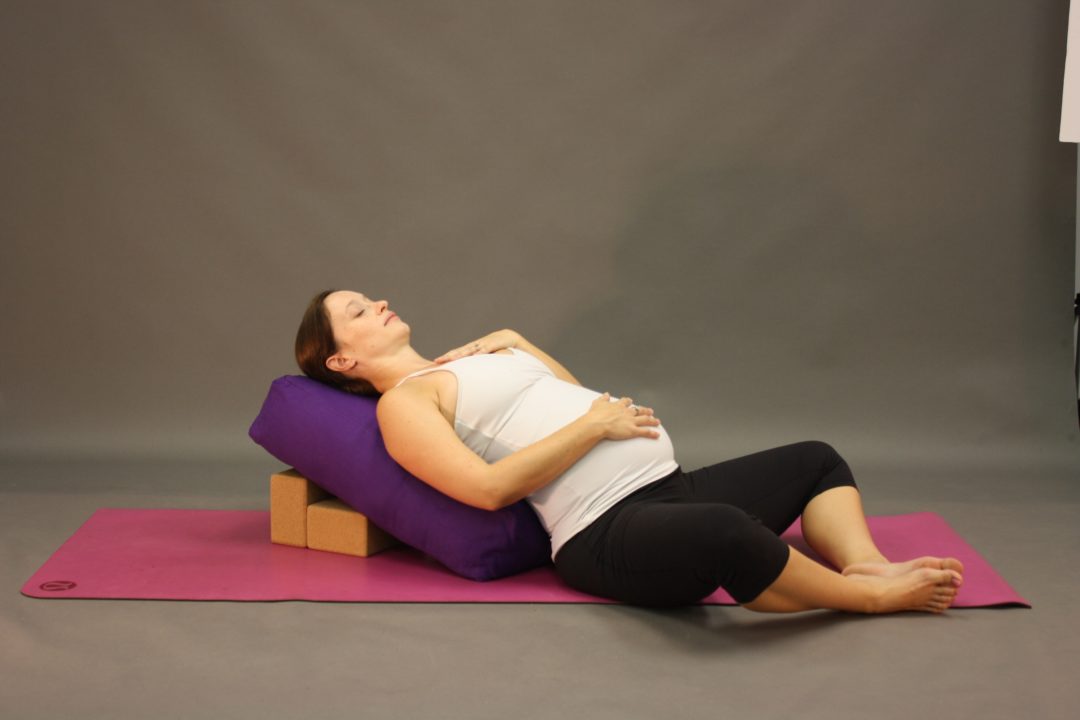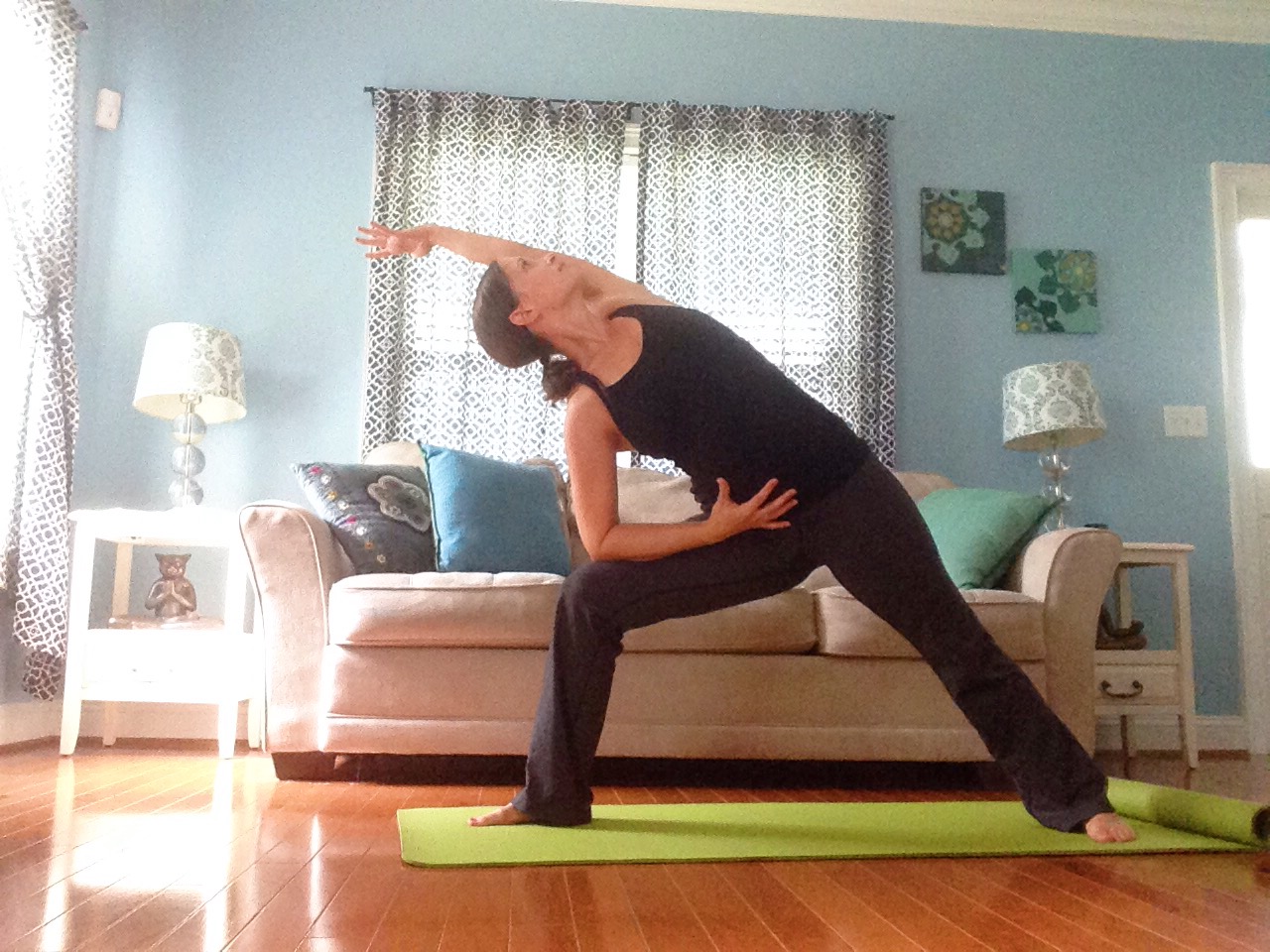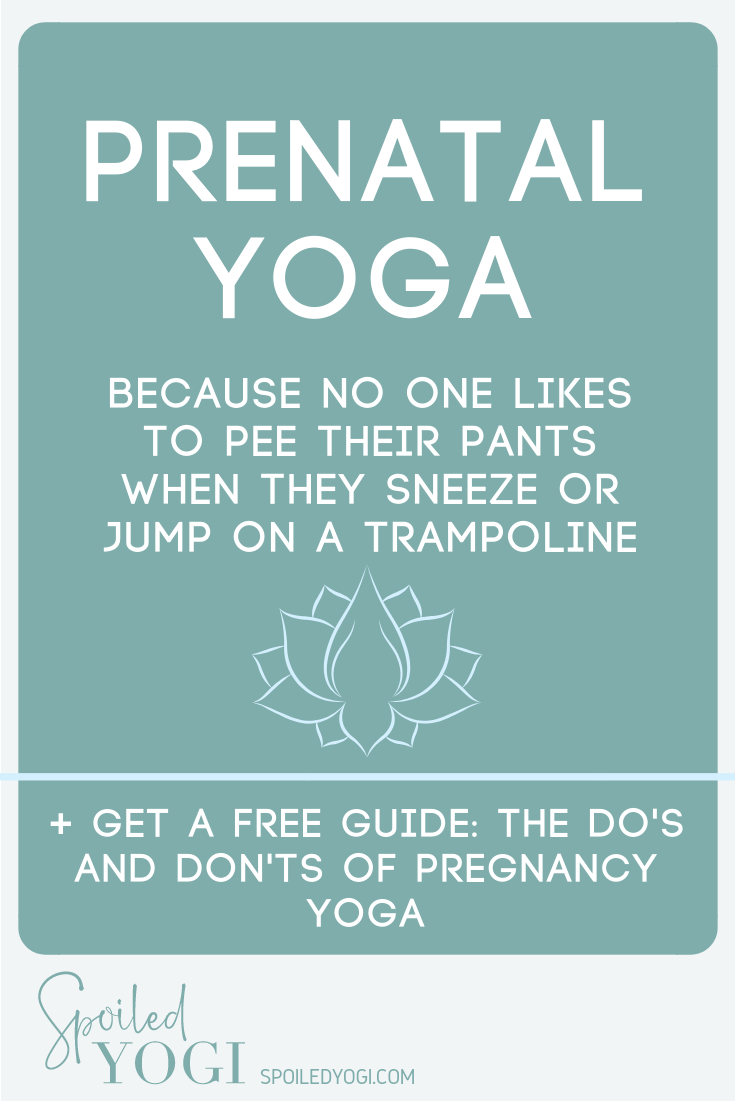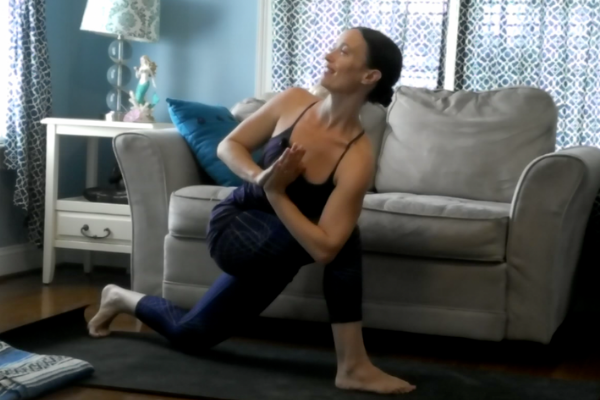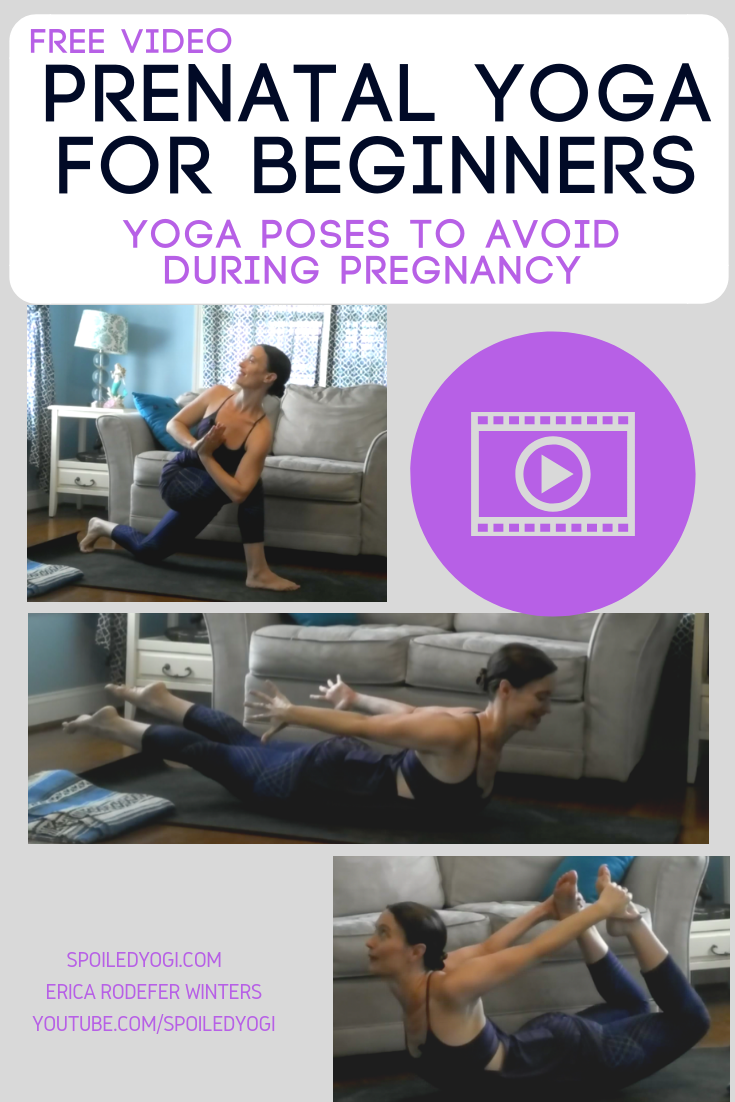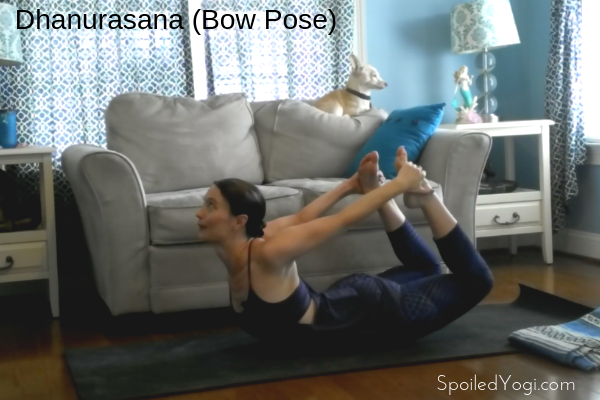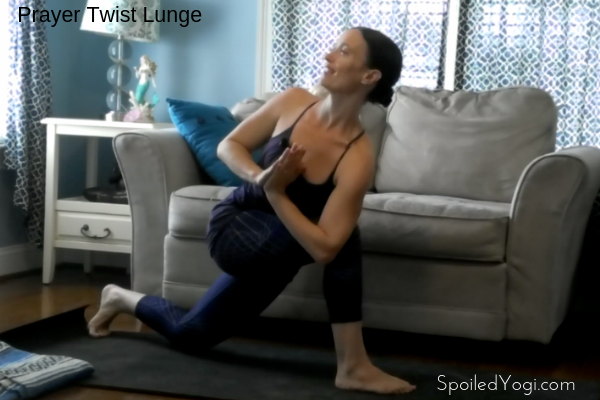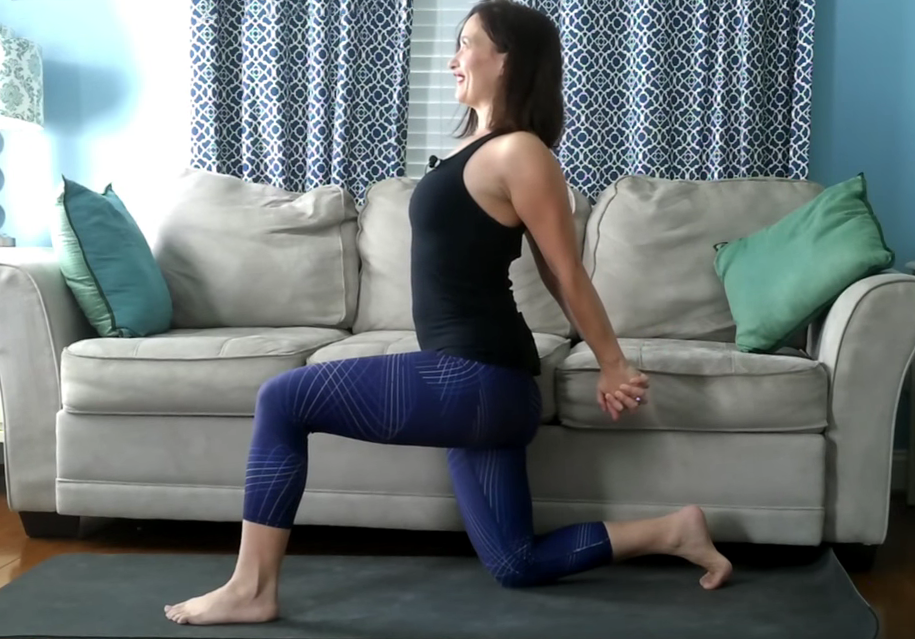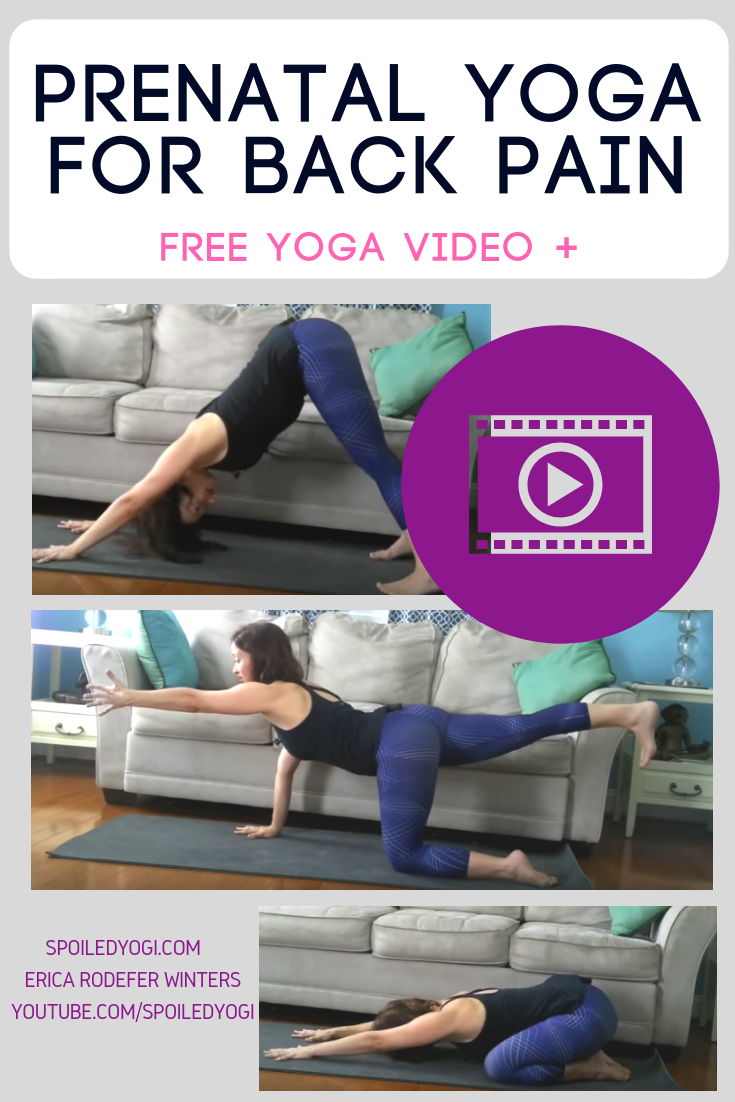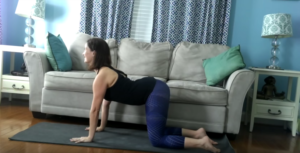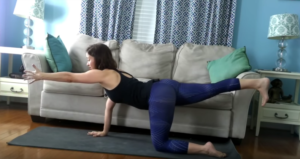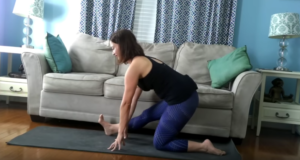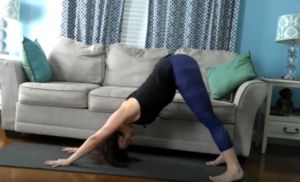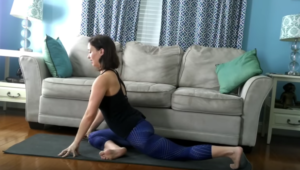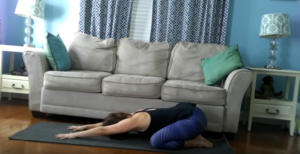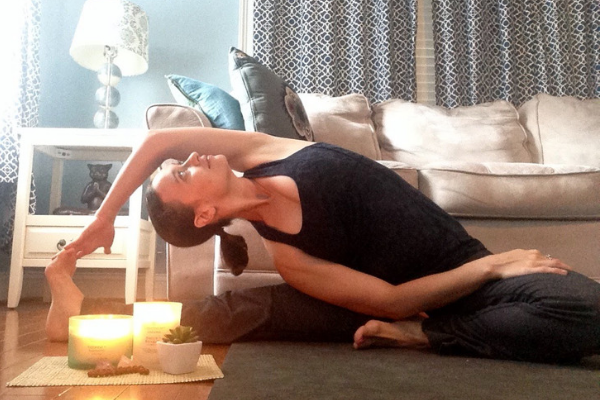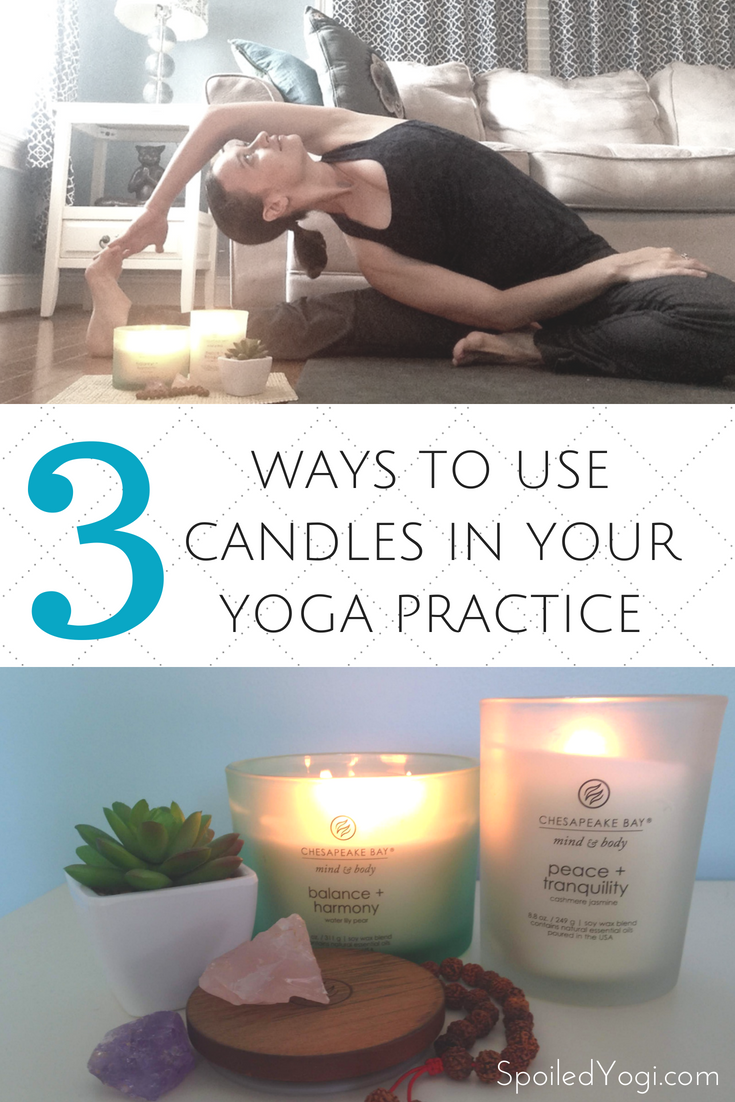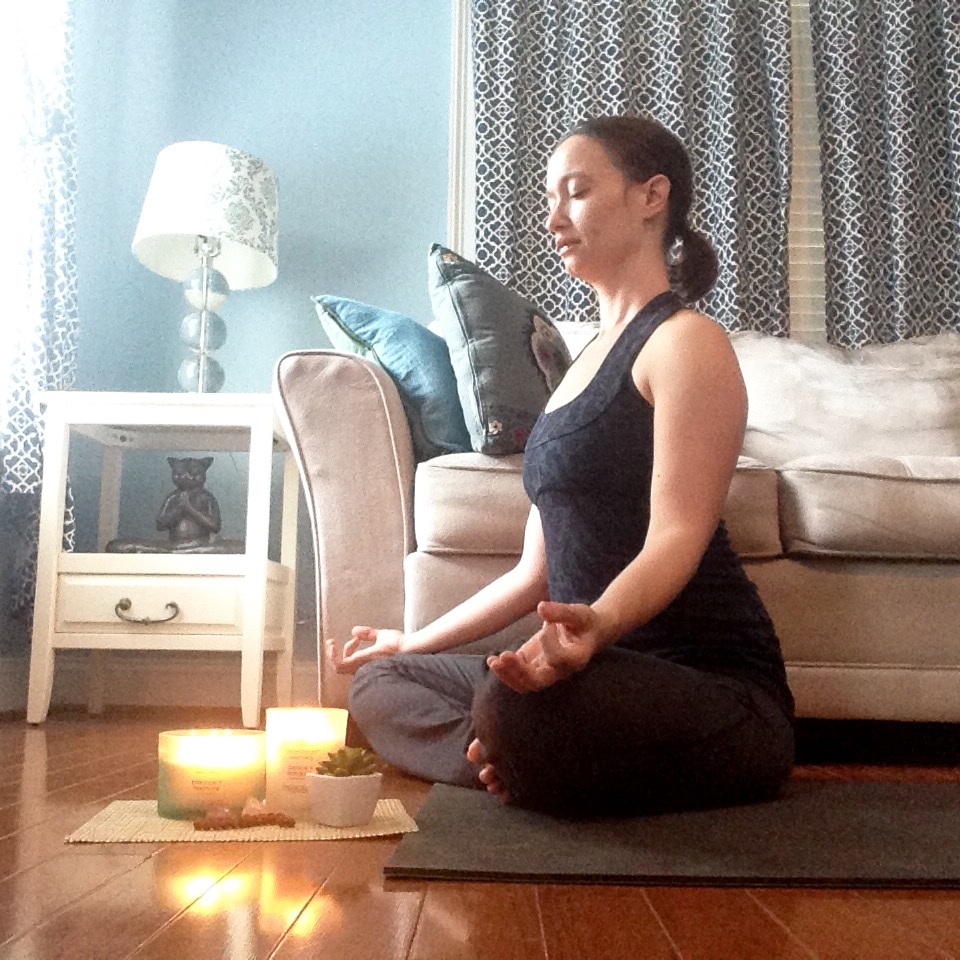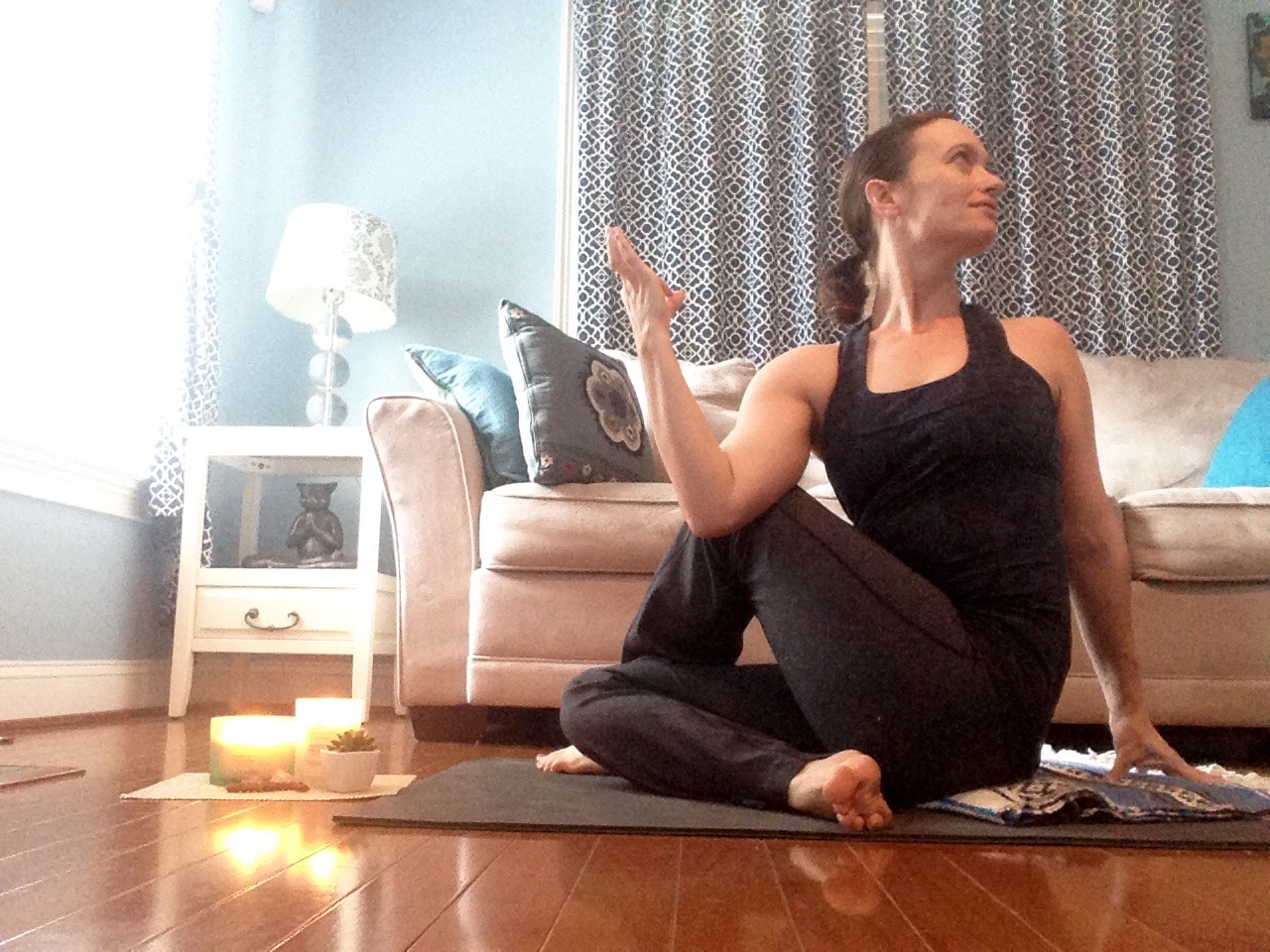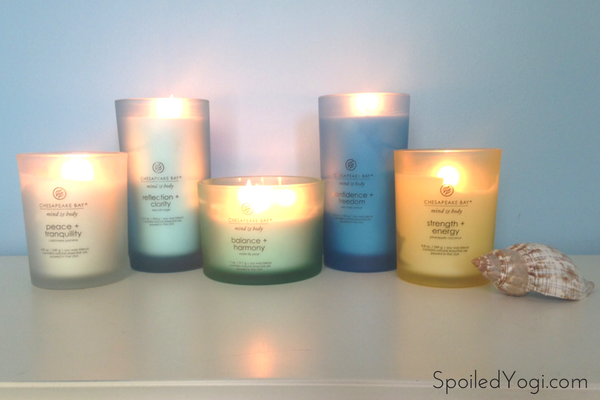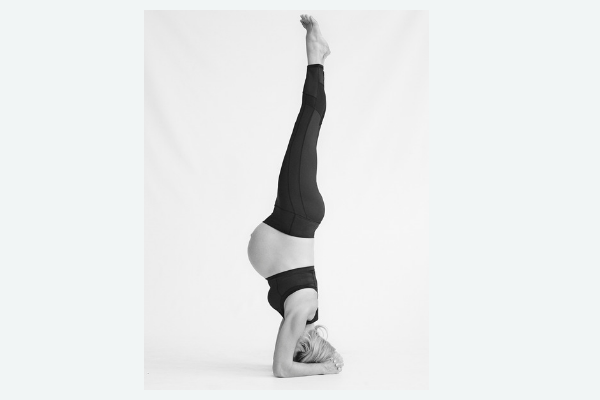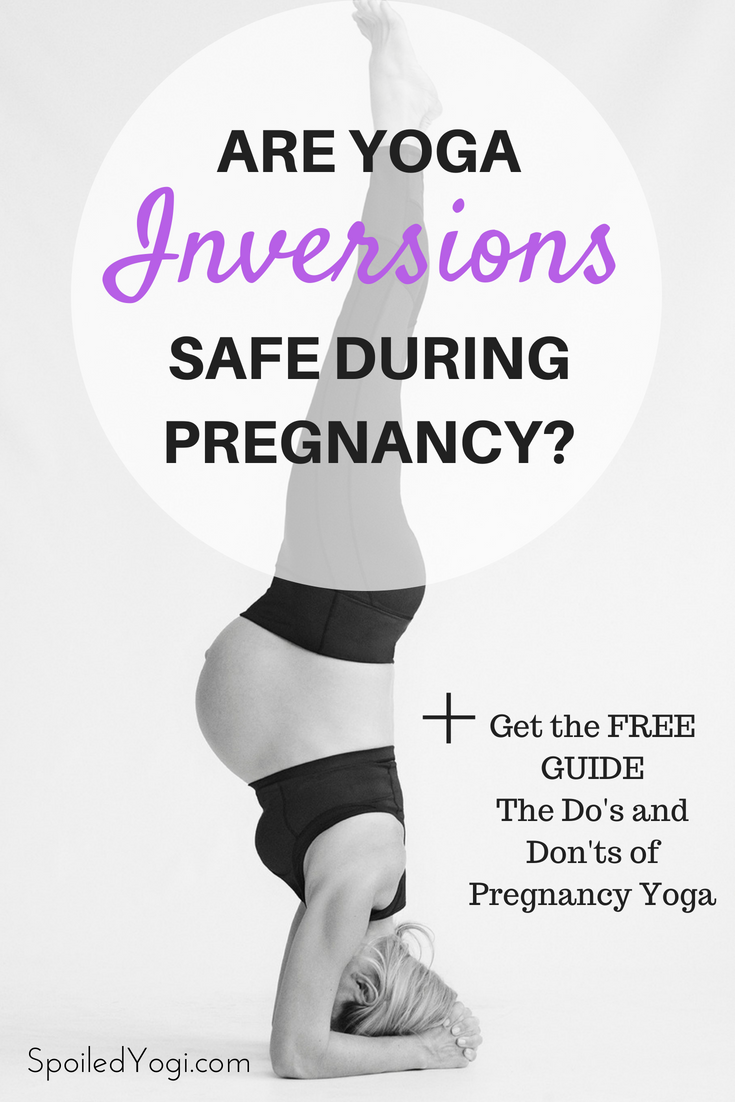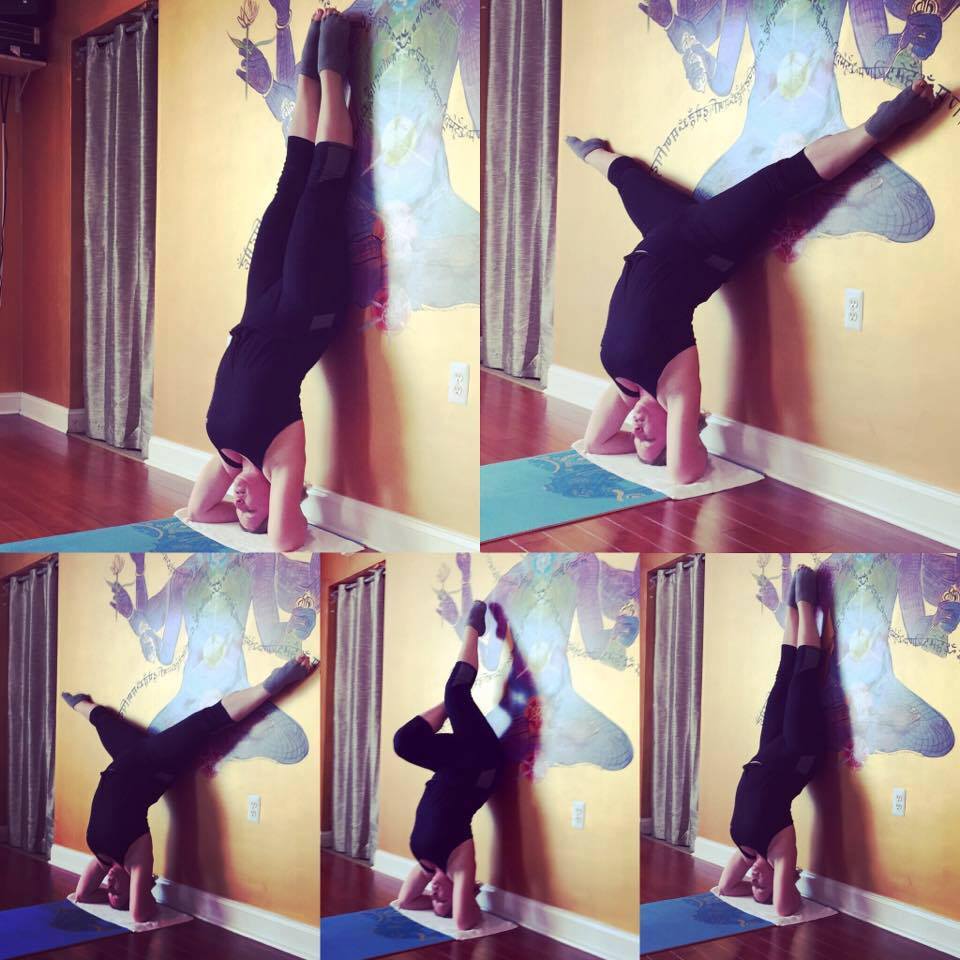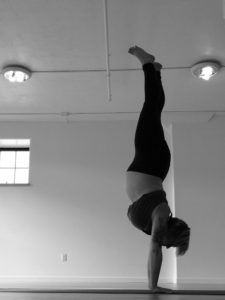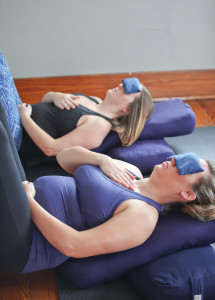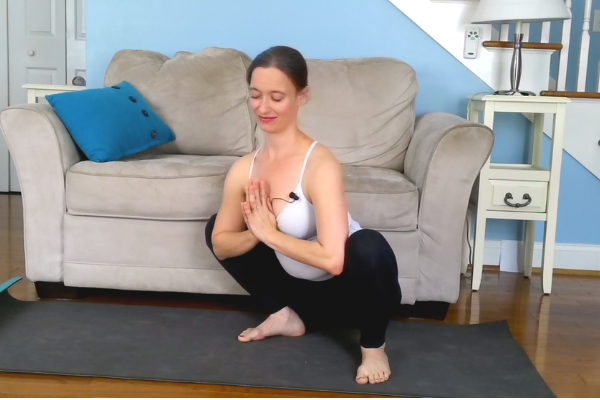
Want to hear a funny story?
During my first labor Puppy Pose (scroll down to see the pose description!) was my jam for getting through my early contractions. Every time one came on, I’d basically bury my head into my bed, tail in the air, breathe deep, and wait for it to pass.
I remember thinking to myself, “I going to ROCK this birth as long as I can keep doing this!”
But then I got to the hospital. And a nurse who clearly didn’t want to be there for the overnight shift made me strip down naked and put on a gown that was open in the back. This was a problem for me. It was night time, but I really didn’t want to show all the hospital workers my FULL MOON pose, if you know what I mean.
Yoga for Birth: 8 Ways Yoga Prepares You for Labor
Here’s the part that’s not so funny:
I am convinced that my hesitation to follow my body’s cues and do what came naturally to me was the biggest slowed my labor down. That was the catalyst for me eventually exhausting myself, panicking, and sending off for an epidural even though I had planned for an un-medicated birth.
Everything worked out in the end and I had the most healthy amazing girl. But the moral of this story is this: When you’re birthing you’ve got to get comfortable with not giving a flying flip what anybody else thinks and FOLLOW YOUR BODY’S CUES for crying out loud. (Also, cry out loud if you need to!)
It is YOUR birth. The people who are at your place of birth are there to SUPPORT you and make YOU comfortable.
Your only job in that labor and delivery room is to tap into your intuition, listen to what your body needs, and do whatever it takes to get as relaxed and comfortable as possible so your baby can be born your way.
Here are a few yoga poses that helped me (and have helped the mamas who have taken my prenatal yoga classes) during their labors. Feel free to use this blog post as a guide to help you prepare for labor and even as a resource on your big day.
See also 6 Breathing Techniques for Labor and Birth
But please, oh please, know that when the time comes, your body will tell you what to do–you just have to listen. You’ve got this, sweet mama!
Yoga for Labor and Birth: 7 Yoga Poses To Practice During Labor
Hands and Knees, Child’s Pose, Puppy Pose (Rock, Rest, and Repeat)
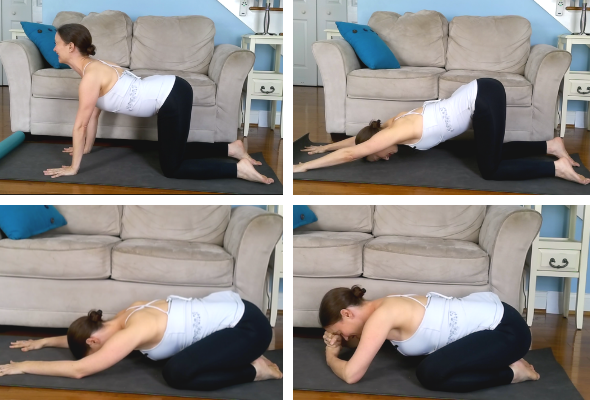
Now that I’ve told you a funny story about my first birth, I’ll let you in on how my second went. I labored on hands and knees on the floor for probably 90 percent of the time. When contractions came, I put my forehead down. My doula gave me a towel because I think it kind of grossed her out. I did not care.
When nurses came into the room, they seemed confused about why I was on the floor. I did not care.
When they asked me to sit on my bed to monitor my contractions, those contractions ceased to exist. I didn’t want to sit on the damn bed. So I refused to do it after that.
They monitored my contractions from a birthing ball or from my hands and knees.
My birth. My body. My rules.
I got the un-medicated birth I wanted. The end.
(For the record, I don’t actually look back on my two births and think that one was better than the other! Both the epidural and the unmedicated births actually had the same result for me–beautiful, healthy children with very little trauma or regret for me.)
Here’s how to do it:
Stack your shoulders over your wrists and your knees under your hips, but slightly wider apart. Wiggle around. Sway from side to side. Make circles. Pay attention to what you need. When you need to rest or when you feel a contraction coming on, try Puppy Pose with the arms outstretched or just rest your Forehead (and that point in between your eyebrows) on stacked fists or on your forearms.
Low Lunge with Hip Circles
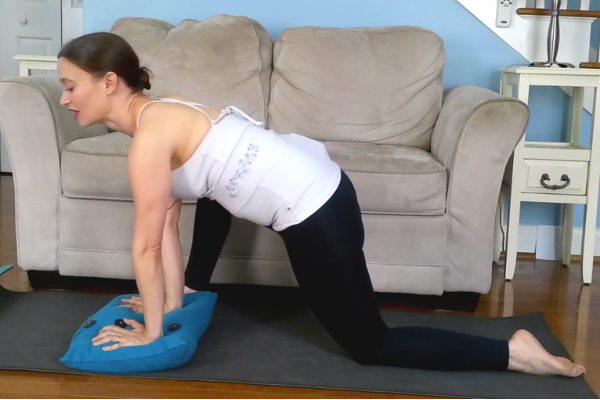
Start on hands and knees. Bring your thumbs to touch right underneath your nose. Then, take as many little steps as it takes to get your right foot forward until it’s beside your right pinkie. Slowly move your hips in circles. Start small, and gradually make the circles bigger if you feel so inclined.
Alternatively, it might feel better to tuck your back toes, straighten the back leg, and simply rock forward and back to soothe yourself.
After a few breaths on one side, come back to hands and knees, bring your left foot forward, and repeat on the second side.
See also Best Poses for the Third Trimester
Half Squat
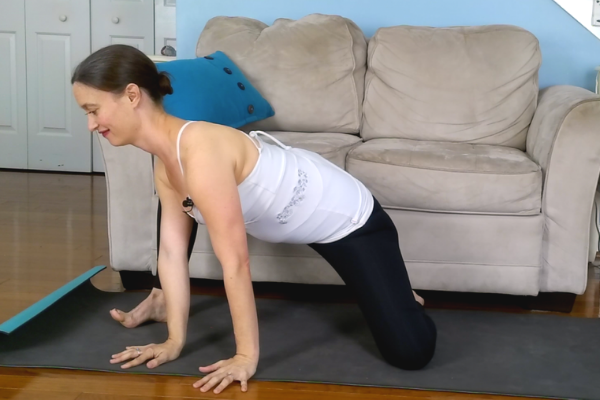
Come back to hands and knees. Then, straighten the right knee as you bring your right foot off the side so it’s in line with your right hip. Turn your right toes out slightly. With and exhale slowly bend your right knee and walk your hands to the right until you find yourself in a half squat position.
Stay here. Or follow your breath as you move from the half squat back to the center. Pause whenever you are inclined for an extra breath.
After several rounds, come back to center and do the left side.
Full Yoga Squat (Malasana)

If you need extra support sit upon a yoga block or even a stack of pillows. Bring your hands to a prayer position and snuggle elbows and the backs of your arms to your inner thighs. If it feels like a good idea use your triceps to gently guide your knees away from each other.
Settle in. Breathe. If you can, sway from side to side to help you access different muscles while you soothe your mind.
Baddha Konasana with Circles Variation (Cobbler Pose Variation)
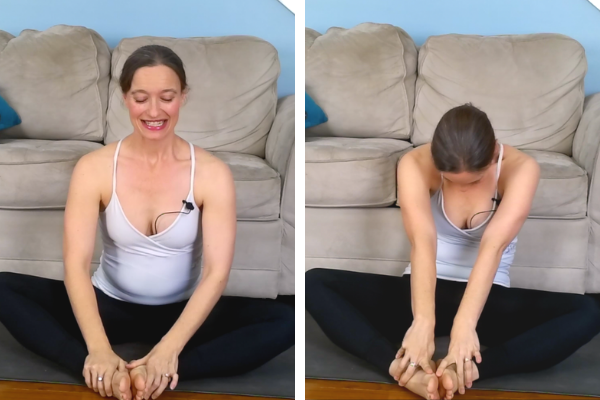
Have a seat on a blanket, bed or couch, or right on the floor. (I think I’ve mentioned I’m a big fan of being in the floor for labor.) Sit with the soles of your feet together. Let your knees fall gently toward the floor. Sit up tall for a moment. Then, start to circle your torso (ribs will move to the right, back, left, and center).
After a few repetitions moving one way, gradually come to a stop. Take a breath. Then, circle in the other direction.
I’d like to hear from you. If this isn’t your first baby, tell me what position you spent most of your labor in. Was it one of these? Something totally different? Let us know by commenting below (pretty please!?).
Did you like this content? Please share the love. Use this image to PIN it now.
